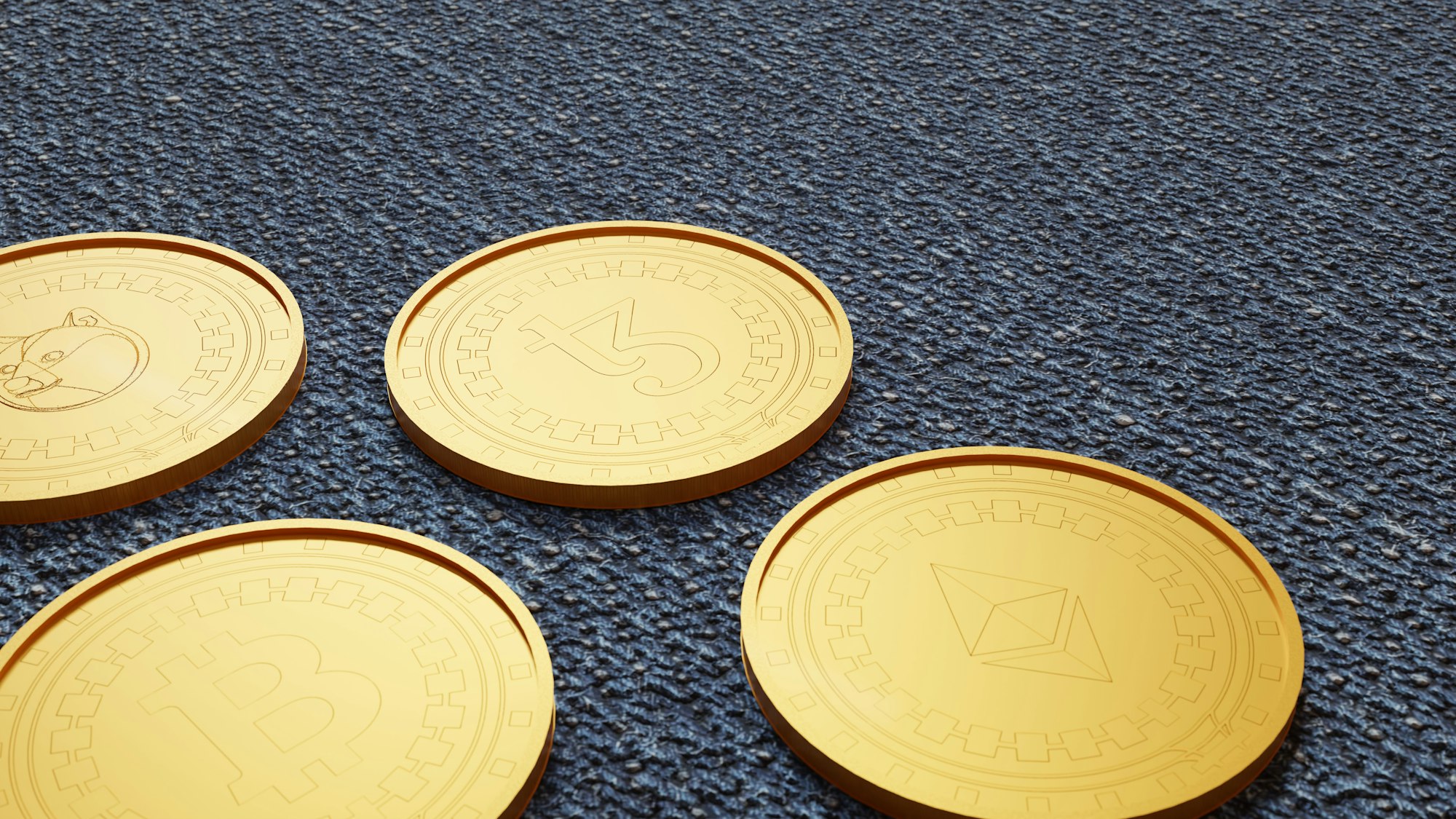
Harnessing the power of Indexer API can dramatically boost your decision-making process, streamline your trading activities, and unveil hidden opportunities in the bustling NFT market. For those new to NFT trading, Indexer API acts as your gateway to efficiently navigate the complex web of blockchain data. Designed with the specific needs of NFT traders in mind, Indexer API offers a broad spectrum of advantages that are essential for navigating the market effectively.
Let's explore how leveraging Indexer API can help make the complex world of blockchain more accessible and navigable for newcomers.

1- Market Analysis and Trends
Market analysis in NFT trading provides crucial insights into current demand, price fluctuations, and future market directions, aiding in informed buying or selling decisions. Trend identification further unpacks the reasons behind market movements, considering cultural, technological, and economic influences on NFT popularity.
Here's how you can leverage these insights for better trading outcomes:
Identifying Popular NFTs:
Using Indexer API to check how often and how many specific NFTs or collections are being bought and sold can help you spot which ones are trending. This data lets you see which NFTs are popular now and might predict which ones will be hot in the future. Essentially, if you notice a lot of people suddenly buying a certain NFT, it could be a sign it's about to take off. Or, if an NFT consistently sees a lot of action, it might be a solid choice for your investment.
Price Tracking:
Price tracking involves monitoring both the past and present prices of NFTs through their sales transactions. This critical data enables you to identify pricing trends, helping you make more informed decisions about when to buy or sell. By analyzing how the prices of NFTs have changed over time, you can spot patterns or shifts in the market value of specific collections or pieces.

2- Portfolio Management
Portfolio Management is all about attentively looking after your digital asset collection to increase its value and make sure it matches your financial goals. This important task means constantly keeping an eye on and making smart changes to your NFT collection. It's supported by two main activities:
Asset Tracking:
This process provides detailed insights into each NFT, including artwork specifics, ownership, and transaction history. Such information is vital as it helps you make informed decisions quickly, understand an NFT's market demand, and identify direct trading opportunities. Simplifying portfolio management, Asset Tracking enables you to assess your collection's diversity, identify potential areas for expansion, and make strategic plans for future investments.
Transaction History:
This step involves examining all your previous transactions—every purchase, sale, and transfer—to discover patterns in your trading behavior and assess how successful those trades have been. More than just a look at profits or losses, this analysis helps you understand the rationale behind each decision. For instance, it can reveal whether specific NFTs sold well due to broader market trends or the growing popularity of an artist.

3- Opportunity Identification
This method is finding NFTs that are worth investing in by looking at how rare they are, how much they might be worth, and what's happening in the market right now. With Indexer API, traders can check out what makes an NFT special and keep an eye on the market as it moves, to spot the best times to buy or sell.
This crucial step hinges on two main pillars:
Rarity and Valuation:
By using Indexer API, you can explore an NFT's details, such as how many exist, special features it might have, or who created it. These details are crucial because they make an NFT more desirable and valuable. It helps you identify standout NFTs in a collection, revealing which ones are rare and likely to be worth more.
Market Activity:
Keeping track of Market Activity is essential for spotting the best times to buy or sell NFTs. By watching how often NFTs are being traded, you can get a sense of whether they're becoming more popular or losing steam. A lot of trading action can signal a hot opportunity to make a move, either by snapping up a trending NFT or selling one at peak interest.

4- Automated Alerts and Trading
Automated Alerts and Trading offer a smart way to stay ahead in NFT trading. Alerts keep you updated on market changes like new NFT listings or price moves, helping you act fast. Automated Trading, using special software, can buy or sell NFTs for you based on rules you set, like price limits. These tools make trading more efficient, letting you quickly take advantage of market opportunities.
This process relies on two fundamental components:
Setting Alerts:
As mentioned, setting alerts is a smart move in NFT trading, letting you quickly catch opportunities with notifications for events like new rare NFT drops or price shifts. You can tailor these alerts to focus on what interests you, making it easier to act fast on potential gains. This tool turns complex market data into simple, actionable tips, giving beginners a leg up in navigating the fast-paced NFT scene.
Automated Trading:
Automated Trading uses special software (trading bots) linked with Indexer API to buy or sell NFTs for you, based on rules you set, like specific price points or profit goals. It's great for those ready to dive deeper into NFT trading, as it works 24/7 to catch opportunities, making trades at the best times without you having to watch the market constantly.

5- Research and Due Diligence
Doing your homework before diving into NFT investments is key. Research and Due Diligence mean making sure you're not falling for scams and that the NFTs you're eyeing are truly worth your money. This includes verifying an NFT's real history and ownership to confirm it's genuine and digging into the reputation and past achievements of the NFT's creator or collection.
And It involves two main practices:
Ownership Verification:
An essential step for safe NFT trading, ensuring the digital asset you're interested in is authentic and not part of a scam. By examining an NFT's history on the blockchain, you can see its entire ownership record and confirm its legitimacy. As it helps avoid fake listings and ensures the NFT has a clear and valuable lineage, making your investment more secure.
Collection and Creator Research:
Researching NFT collections and creators is crucial for making smart investments. By using Indexer API, you can explore a creator's past works, how well they've sold, and their interaction with fans. This helps you judge if an NFT is likely to be valuable and if its creator is respected and active in the community. It's a vital step to ensure you're investing in quality NFTs with a strong background.

6- Sentiment Analysis
Sentiment Analysis is like taking the pulse of the NFT market by monitoring what people are saying on social media, how engaged they are with certain NFT projects, and watching the moves of big-time investors, known as "whales." By paying attention to how often NFTs are mentioned, their popularity, and the overall vibe from the community, you can start to see which NFTs might increase in value.
Here’s how you can detect them:
Social Signals:
A blend of data analysis and social media trends to reveal what's hot in the NFT world. By tracking mentions, popularity, and engagement around NFT projects, beginners can gauge the market's interest and predict which NFTs might grow in value. A rise in positive chatter could mean an NFT's price is about to go up, while less buzz or negative talk could hint at a decrease.
Market Sentiment:
This method involves watching what the big players, or "whales," are doing. If they're buying a lot, the market might be getting ready for a price increase (bullish trend). If they're selling, prices might drop soon (bearish trend). By keeping an eye on these large transactions, even beginners can get a feel for the market's direction, helping them decide when to buy or sell NFTs.

7- Predictive Analytics and Machine Learning
This method turns vast amounts of data into powerful insights. Using data from Indexer API, traders can create models that predict where NFT prices might go next, helping spot trends and opportunities. Plus, with Market Simulation, you can practice your trading strategies using historical data, all without risking real money.
Building Predictive Models:
The Indexer API can provide a wealth of data that, when used with machine learning models, can help predict how NFT prices might change, uncover hidden trends, and inform smarter trading decisions. Essentially, this method uses past and present market data to help you make educated guesses about future price movements, giving you an edge in your trading strategy.
Market Simulation:
Market Simulation uses past market data, available through Indexer API, to let NFT traders practice their strategies in a virtual setup that mimics real market conditions—without risking any money. It's like a test run for your trading ideas, allowing you to see how they would have performed in different situations, from rising to falling markets.

To Wrap it all up
For those new to NFT trading, Indexer API is a secret weapon. They give you a clear view of what's happening, helping you manage your collection effortlessly, and spotting the best moments to buy or sell based on solid data. By learning how to use these API, you can stay one step ahead in the fast-paced world of NFTs, making smarter decisions that keep you competitive.
Start your NFT trading journey with Indexer API. Access key market insights, enhance your portfolio and trade with confidence. Join Indexer.xyz today and gain a competitive edge in the NFT marketplace!



